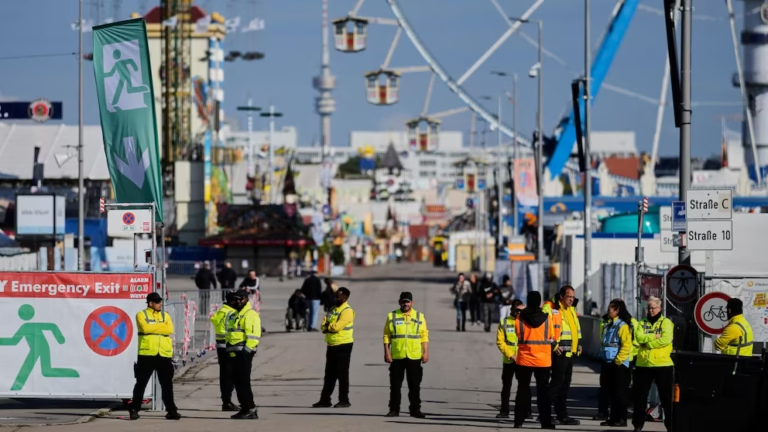Table of Contents
Why the African Union Demands a New Map of Africa’s True Scale
Africas true scale has long been a subject of cartographic debate. For centuries, our perception of the world has been shaped by the Mercator projection, a map that, while useful for navigation, dramatically distorts the size of landmasses. The African Union (AU) has now taken a firm stand, urging the global adoption of a world map that accurately represents the continent’s real size.
This move is not just a geographical correction; it’s a powerful statement about historical inaccuracies and Africa’s rightful place on the global stage. This article will delve into the reasons behind the AU’s push. We’ll explore the historical context of map distortions, analyze the implications of these inaccuracies, and examine the future of cartography. Get ready to challenge what you thought you knew about the world, and discover why seeing Africas true scale is more important than ever.
The Historical Inaccuracy of Africa’s True Scale
The Mercator projection, created in 1569, was a revolutionary tool for sailors, as it preserved compass directions as straight lines. However, it came at a significant cost: it stretched out landmasses at the poles, while shrinking those closer to the equator. As a result, Greenland appears to be roughly the size of Africa, when in reality, Africa is a stunning 14 times larger.
This distortion has long been a source of frustration and a symbol of colonial-era thinking, where European powers were often represented as being larger and more central than they actually were. By demanding a map that shows Africa’s true scale, the African Union is confronting this historical narrative and advocating for a more balanced and truthful representation of our planet. This is a powerful step towards decolonizing our collective geographical consciousness and giving the continent its due visual prominence.
The Geopolitical and Educational Impact of Africa’s True Scale
The push for a new map is about more than just correcting a geographical error. It has profound geopolitical and educational implications. For decades, students worldwide have been learning from distorted maps, which can subtly reinforce Eurocentric biases. A correct map would serve as a powerful teaching tool, providing a more accurate understanding of the world’s geographical and demographic realities.
Read More: South Korea Shrinking Military vs. North Korea Forces
Moreover, seeing Africa’s true scale could change global perceptions of the continent. Instead of being viewed as a series of small, fragmented countries, Africa would be seen as a vast and diverse continent, rich in resources and potential. This visual shift could help foster greater respect and collaboration, moving away from outdated stereotypes and towards a more equitable global partnership.
Alternative Projections: Maps that Capture Africa’s True Scale
While the Mercator projection is the most common, there are several alternative maps that provide a more accurate depiction of land sizes. The Gall-Peters projection, for example, is a map that maintains the correct proportions of landmasses, but it distorts their shapes. The equal-area projection is another alternative that presents all continents in their correct relative size.
The AU’s call is not just for one specific map, but for a fundamental shift in how we view the world. It’s an invitation to explore and adopt cartographic tools that prioritize accuracy over convenience. By embracing these alternatives, we can provide a more truthful and respectful representation of Africa’s true scale and the rest of the world.
The Path Forward: From Awareness to Adoption
The African Union’s declaration is a significant step, but it is just the beginning. The challenge now is to translate this awareness into action. Governments, educational institutions, and media organizations must take the lead in adopting new maps and educating the public about the importance of accurate cartography.
This is an opportunity for a global conversation about our shared history and future. By correcting this long-standing geographical distortion, we can begin to correct the historical biases that have shaped our worldview. This is a move toward a more equitable and informed global society.
A New Worldview: Seeing Africa for What It Truly Is
The call to show Africa’s true scale is a powerful one. It is a demand for historical and geographical justice. By adopting more accurate world maps, we can change the way we see the world and, more importantly, the way we see each other. It’s time to put outdated maps and mindsets behind us and embrace a more accurate and respectful representation of our planet.
Read More: African Union urges adoption of world map showing continent’s true size | Reuters



GTA VI Beta: Cutting-Edge Technology https://gta2026.netlify.app
The photos are stunning, makes me want to visit too.
VIP Access: GTA VI Beta Awaits https://pixeldrain.com/u/mPekrzai
GTA VI Beta: Share Your Experience https://rockstargames.pythonanywhere.com
The guide is very complete, suitable for both beginners and experts.
https://shorturl.fm/TYalG
There is definately a lot to find out about this subject. I like all the points you made
https://shorturl.fm/ksvsK
https://shorturl.fm/Z8ziK
https://shorturl.fm/4pmhi
Great article! 👏 I really appreciate the way you explained this topic—it shows not only expertise but also a clear effort to make it easy for readers to understand. What stood out to me most is how practical your insights are, which makes the piece very relatable. As someone who works a lot with different industries and categories, I can say your perspective feels very authentic. At https://meinestadtkleinanzeigen.de/top-link-building-agenturen-in-deutschland/ we run a directory platform in Germany that connects people and businesses across many categories, and it’s always refreshing to see content that adds real value like this. Looking forward to reading more of your work—keep it up! 🚀
https://shorturl.fm/zi6wC
https://shorturl.fm/v82nT
https://shorturl.fm/ESpjT
https://shorturl.fm/QzCKT